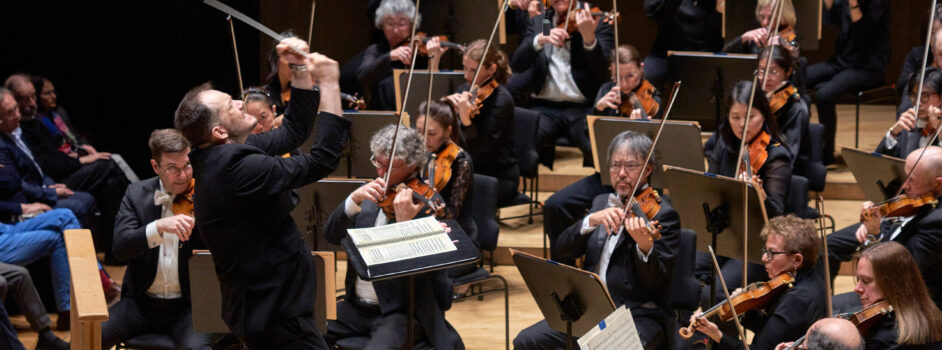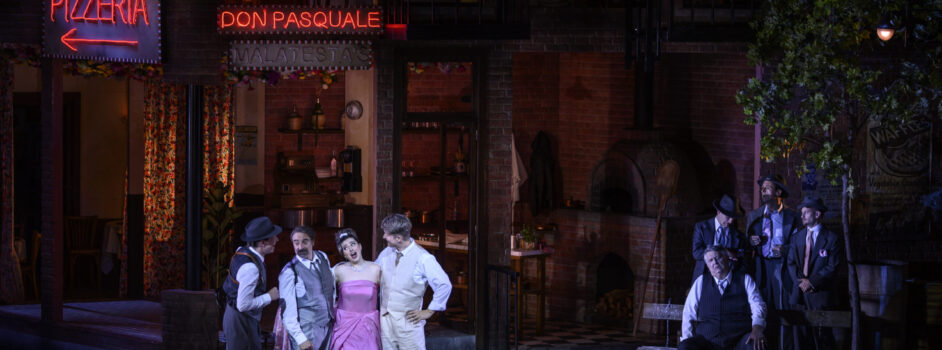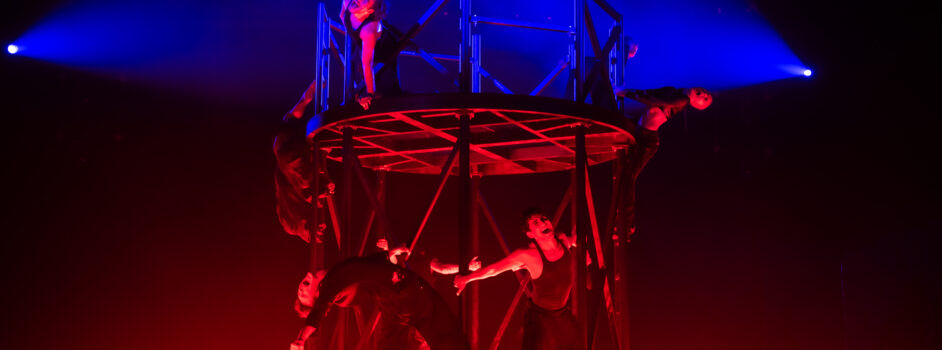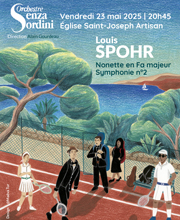Plus de détails
19.VIII-2014. Helsinki, Helsinki Music Center. Dmitri Shostakovich (1906-1975): Orango (Prologue), Symphony No. 4, op. 43. Gerard McBurney, orchestration, Louis Price, video design, Antti Silvennoinen, light design, Erik Söderblom, dramatization, Natalia Pavlova and Natalia Yakimova, sopranos, Alexander Shagun, Alexander Trofimov, Vladimir Babokin, Oleg Losev, and Dmitry Koleushko, tenors, Ivan Novoselov, Leo Elhardt, Denis Beganski, and Yuri Yevchook, basses. Dominante and Murtosointu, choirs. Finnish Radio Symphony Orchestra, Esa-Pekka Salonen, conductor.
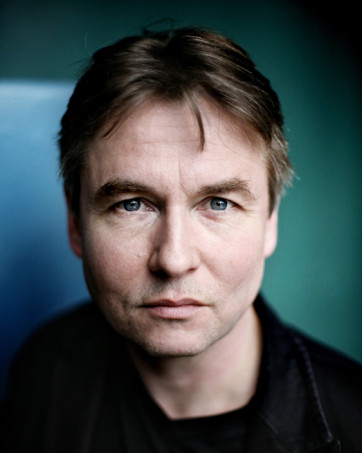 The Finnish musical world is rightly proud of its many conductors working on the international circuit, but there seems to be an extra layer of excitement and anticipation whenever Esa-Pekka Salonen is performing in Helsinki.
The Finnish musical world is rightly proud of its many conductors working on the international circuit, but there seems to be an extra layer of excitement and anticipation whenever Esa-Pekka Salonen is performing in Helsinki.
In a YouTube video produced by the Philharmonia Orchestra in London, Salonen calls Orango and the Symphony No. 4 as the « two sides of Shostakovich. » Written within a few years of each other, both works display the youthful composer's unbridled creativity and assured confidence. While Orango shows off the cheeky composer who cut his teeth accompanying silent films at the piano, the Symphony No. 4 is a far more serious work, perhaps foreshadowing the darkness and tragedy waiting in the composer's future.
Shostakovich apparently disposed of his unwanted sketches and manuscripts with sufficient frequency that a friend bribed his housemaid to save whatever music she could recover from the composer's waste. Some of these papers found their way to the Glinka Museum in Moscow, where the prologue of Orango was discovered by the Shostakovich scholar Olga Digonskaya in 2004. The composer's widow Irina Shostakovich invited Gerard McBurney to orchestrate the sketches, which were first performed by Esa-Pekka Salonen and the Los Angeles Philharmonic in 2011.
Orango was commissioned by the Bolshoi Theater to celebrate the 15th anniversary of the October Revolution. Aleksey Tolstoy and Alexander Starchakov were tasked with the libretto, while Shostakovich would provide the music. Not surprisingly, the work was supposed to extol the virtues of socialism, but the librettists instead produced a satirical text based on Starchakov's tales about a human-ape hybrid developed in a medical experiment. The work was planned to be a three-act opera, but for a variety of reasons the Bolshoi Theater abandoned the project. Shostakovich managed to complete the prologue, but only in piano score.
Listeners familiar with Shostakovich's The Bolt will immediately recognize the opening number in Orango. The music then moves unabashedly through diverse styles: from tender, light-hearted dances to raucous marches, sometimes militant. Ironic and grotesque elements were never far from the surface. Louis Price's video, which featured excerpts from old Soviet propaganda films, heightened the sense of irony in this work.
The vocal parts were performed by soloists from the Mariinski Theater Academy. It goes without saying that in addition to their idiomatic performances, these singers threw themselves into the music with the (almost) necessary abandon required. Under Salonen the Finnish RSO produced a sound which was shiny and polished, perhaps even steely. This approach worked particularly well in the more militant numbers.
This polished and steely sound was entirely appropriate in the first movement of the Symphony No. 4, which allowed the cold and machine-like elements to come to the fore. Excellent woodwind playing was on display, particularly in the clumsy woodwind dance before the frenetic strings-only fugue, here taken at a sufficiently rapid but manageable pace. Salonen also allowed the percussion to play out when necessary, which made for a physical, visceral experience, sometimes even overwhelming the brass.
The relatively brief night-watch second movement benefited from appropriately stoic playing during the long string melodies, as well as some precise percussion playing in the movement's « ticking clock » conclusion.
One of the most notable aspects of Salonen's interpretation of the lengthy final movement came shortly before the coda. Supported by two sets of pounding timpani, the full orchestra attempts to conclude the work with a massive C major apotheosis. This eventually transitions to C minor, with the music taking on a sense of desperation and tragedy. One more C Major outburst is heard, before the symphony begins an endless C minor fade to nothing.
While most interpretations of this section employ one tempo, Salonen chose a very broad tempo for the C major sections. This gave the music a sense of slow motion, further invalidating the false sense of victory (think of the conclusion to Shostakovich's Symphony No. 5 when taken at a slow tempo). When the music transitioned to minor, Salonen increased the tempo, which felt like being thrown harshly back into reality, into tragedy. When C major returned, Salonen reverted back to the broad tempo. While this interpretation likely surprised listeners familiar with this work, the effectiveness of this approach was convincing.
The final pages of this massive symphony are a protracted fade to a frozen nothingness. Under Salonen's guidance this tragic dissolution was chillingly executed. After the final notes dissipated, the audience gave complete respect to Shostakovich's message, withholding their applause appropriately. In some ways, the silence which follows this symphony is just as powerful as the symphony itself.
This evening's performance provided ample evidence of Salonen as a formidable interpreter of early Shostakovich. Perhaps Helsinki audiences can look forward to a concert (or staged) performance of Salonen conducting Lady Macbeth of Mtsensk?
Crédits photographique : Katja Tähjä
Plus de détails
19.VIII-2014. Helsinki, Helsinki Music Center. Dmitri Shostakovich (1906-1975): Orango (Prologue), Symphony No. 4, op. 43. Gerard McBurney, orchestration, Louis Price, video design, Antti Silvennoinen, light design, Erik Söderblom, dramatization, Natalia Pavlova and Natalia Yakimova, sopranos, Alexander Shagun, Alexander Trofimov, Vladimir Babokin, Oleg Losev, and Dmitry Koleushko, tenors, Ivan Novoselov, Leo Elhardt, Denis Beganski, and Yuri Yevchook, basses. Dominante and Murtosointu, choirs. Finnish Radio Symphony Orchestra, Esa-Pekka Salonen, conductor.

